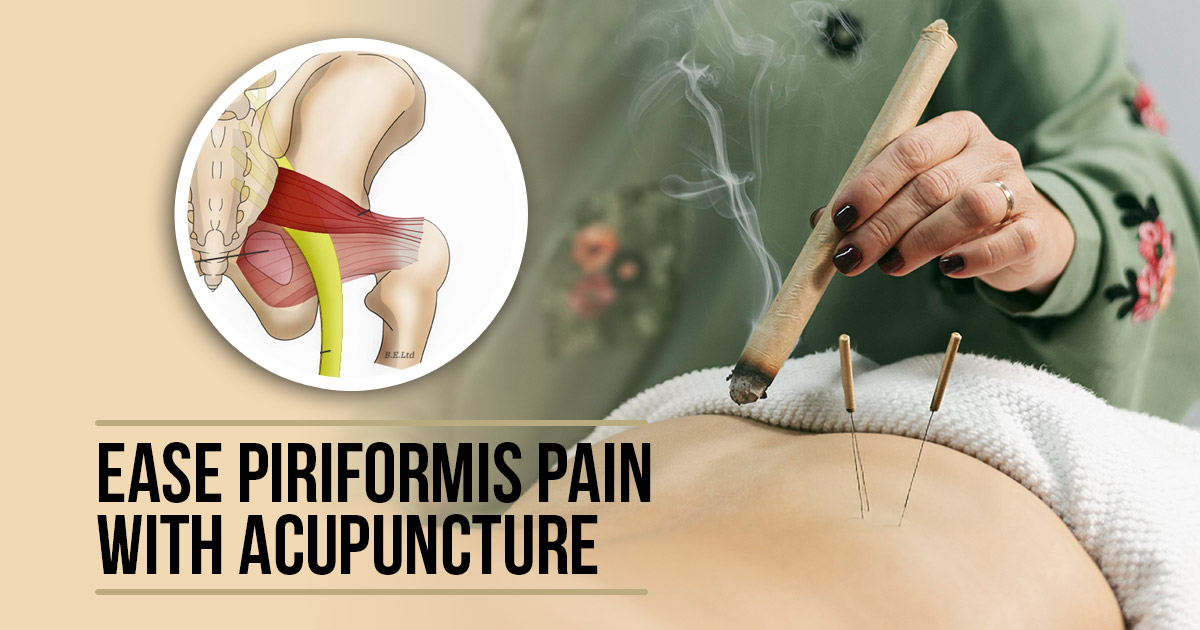Ease Piriformis Pain with Acupuncture

Piriformis syndrome can cause nagging pain in the lower back, hips, and legs, making everyday movements uncomfortable. Many people turn to acupuncture for piriformis syndrome as a natural way to ease muscle tension, improve circulation, and reduce nerve compression. This approach focuses on relieving pressure in the piriformis muscle, helping to restore mobility and comfort without relying on medication or invasive treatments.
What is Pain Caused by Piriformis Syndrome?
Piriformis syndrome happens when the piriformis muscle, located deep in the buttock, irritates or compresses the sciatic nerve. This can lead to discomfort in the lower back, hips, and legs, often mistaken for other conditions like sciatica. Muscle tightness, inflammation, or injury can trigger this issue, making movements like walking, sitting, or climbing stairs painful.
Symptoms can range from mild discomfort to severe pain that affects daily activities. Many people turn to piriformis acupuncture for relief, as it helps relax tight muscles and improve blood flow. Common symptoms include:
- Pain in the buttock or hip area
- Numbness or tingling down the leg
- Increased pain after prolonged sitting
- Discomfort when climbing stairs or walking
- Muscle spasms in the buttock
What is Acupuncture and Its Benefits for Piriformis Syndrome?
Acupuncture is a traditional Chinese medicine practice that involves inserting thin needles into specific points on the body to promote healing and reduce pain. This technique helps improve circulation, release muscle tension, and restore balance in the body. Many people use acupuncture for piriformis to target muscle tightness and nerve irritation, making it a popular choice for managing discomfort.
For those dealing with piriformis syndrome, acupuncture focuses on relieving pressure around the sciatic nerve and reducing inflammation. This approach can ease pain, improve mobility, and support long-term recovery by addressing the root cause of muscle imbalances.
Benefits of Piriformis Acupuncture
- Relieves muscle tightness and spasms
- Reduces inflammation around the sciatic nerve
- Improves blood flow to speed up healing
- Enhances mobility and flexibility
- Provides a natural alternative to pain medication
Should I Do Yoga with Acupuncture?
Yoga and acupuncture work well together to relieve pain and improve mobility in people with piriformis syndrome. While acupuncture for piriformis syndrome helps release muscle tension and reduce nerve irritation, yoga stretches and strengthens the surrounding muscles to prevent future tightness. Combining both approaches can enhance flexibility and support long-term relief.
Adding gentle yoga poses to an acupuncture routine can help maintain the benefits of treatment. Stretching the piriformis muscle reduces stiffness, improves posture, and promotes better movement patterns. Regular practice can also prevent flare-ups by keeping muscles balanced and relaxed.
Benefits of Combining Yoga with Piriformis Acupuncture
- Enhances flexibility and range of motion
- Reduces muscle tightness and spasms
- Supports better posture and alignment
- Strengthens surrounding muscles for stability
- Helps prevent future pain and discomfort
Take the Natural Path to Lasting Relief
Acupuncture for piriformis syndrome offers a natural way to ease pain, improve mobility, and support muscle recovery. Combined with stretching and movement techniques like yoga, it helps prevent tightness and reduces pressure on the sciatic nerve. This approach provides long-term relief without relying on medication or invasive treatments, making it a great option for those looking for a holistic solution.
